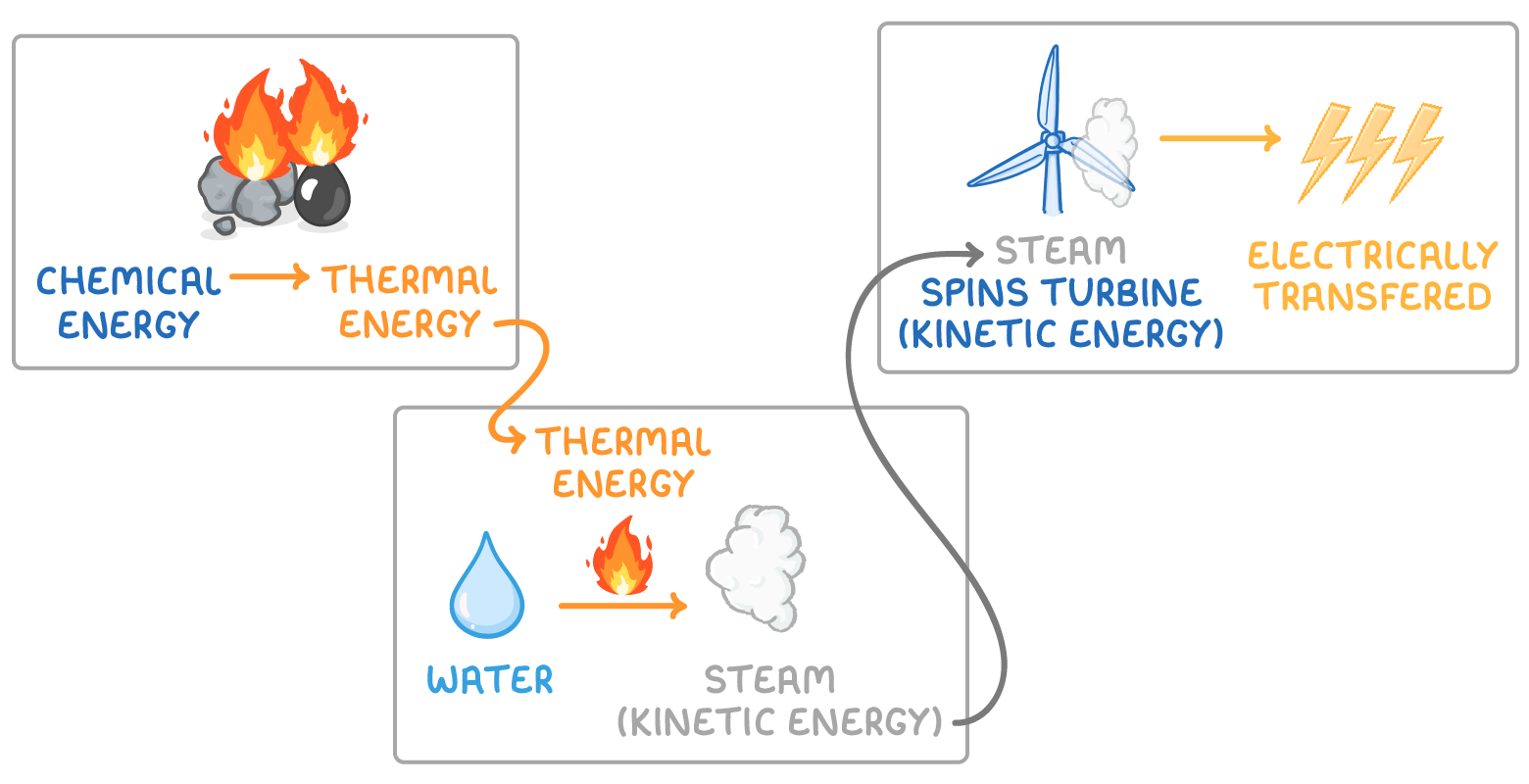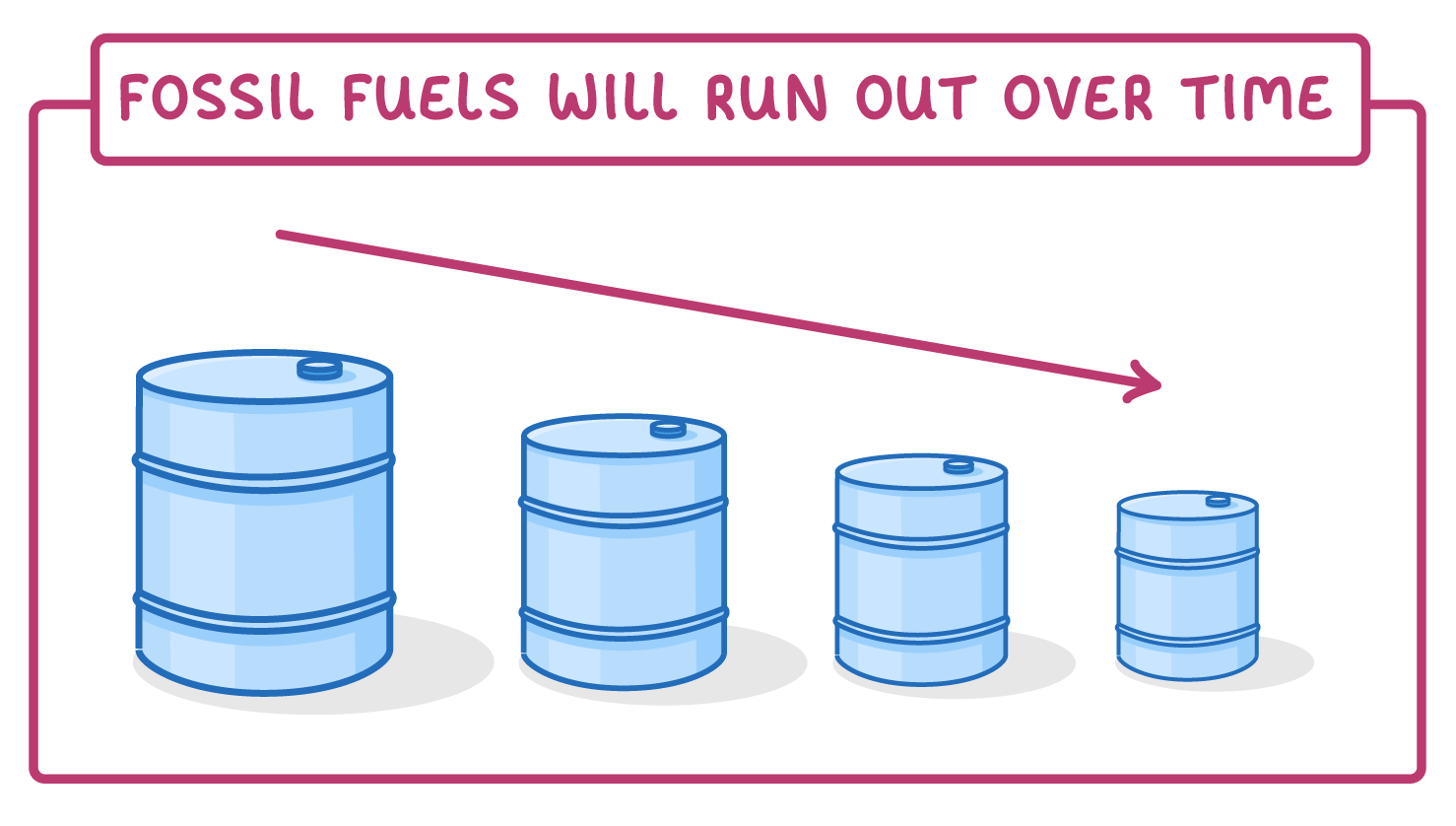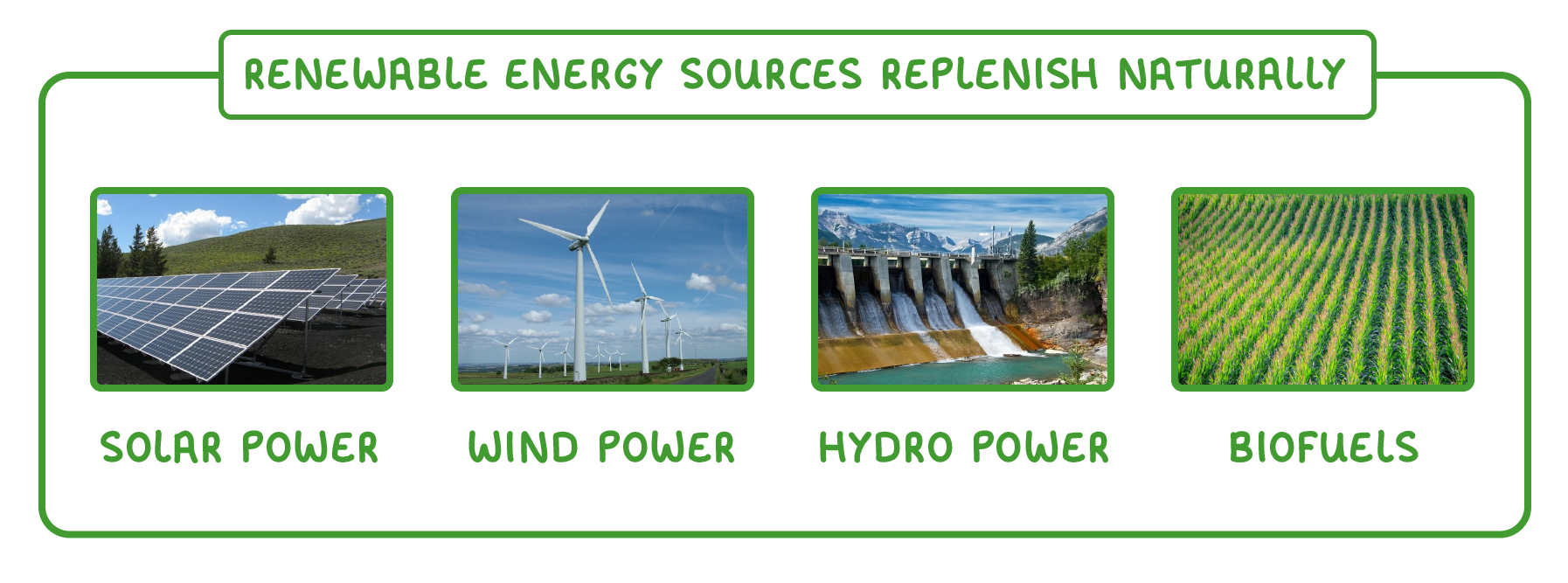Generating electricity
This lesson covers:
- Different energy resources used to generate electricity
- Non-renewable resources
- Renewable resources
Ways of generating electricity
There are a variety of methods used to generate the electricity that powers our homes and devices.
In most cases, an energy resource is used to spin a turbine which then spins a generator to produce electricity.
Generating electricity using fossil fuels

1. Fossil fuels - burning coal, oil and gas to turn turbines.
- The chemical energy in the fuel is converted to thermal energy.
- Thermal energy is used to heat water into steam, which has kinetic energy
- The kinetic energy of the steam turns the turbines.
- The kinetic energy is transferred to electrical energy in the generator and is eventually transferred to our homes.
Generating electricity using renewable sources

2. Renewable sources.
- Solar power - Photovoltaic panels convert sunlight into electricity.
- Wind power - Wind turns blades of a turbine to generate electricity.
- Hydro power - Flow of water turns a turbine to generate electricity.
- Biofuels - Burning plant material to heat water to form steam, that turns a turbine to generate electricity.
Non-renewable fossil fuels will run out

Fossil fuels like coal and oil are made from ancient dead organisms.
More can't be created quickly to replace what gets used and fossil fuel reserves are limited.
Experts estimate:
- Oil may totally run out in around 50 years if we don't reduce usage.
- Coal could last up to 200 more years.
These fuels now provide most global energy. But reserves are declining fast while demand grows.
How can we conserve non-renewable fossil fuels?
To reduce our fossil fuel usage we need to:
- Use energy wisely now - turn off appliances and lights when not needed.
- Shift to LED lights and insulate homes to improve efficiency.
- Develop more solar and wind renewable energy instead of fossil fuels.
The goal is to transition from limited fossil fuels to unlimited renewables before reserves totally disappear.
Renewable energy

Renewable sources include:
- Solar power.
- Wind power.
- Hydro power from flowing water.
- Biofuels from plants.
These renewable energy sources replenish naturally. As long as the sun shines and wind blows, we can't run out.
Advantages and disadvantages of renewable energy
The advantages of using renewable energy are:
- Unlimited supply - They won't ever disappear unlike fossil fuels.
- Reduce reliance on imported polluting fuels.
- Much lower emissions, which is better for the planet.
The disadvantages of using renewable energy are:
- The supply varies. Solar only works when its sunny and wind turbines need windy days.
- Storage and backup generators need to be used to ensure a steady supply.